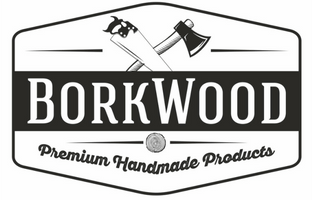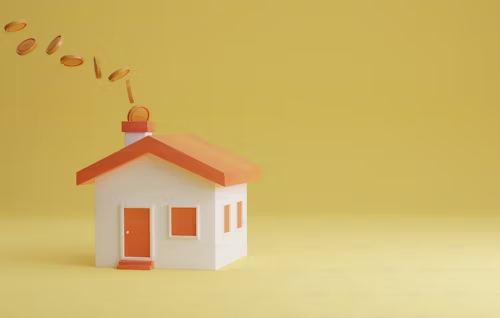8 Essential Features to Look at When Buying Prefab Shed
Do you find the items in your garage and lawn space creating an unappealing mess? So many garden tools lying in the backyard might create a disorganized look while outdoor furniture needs dedicated storage solutions.
But no more worries! A prefabricated shed can do wonders. You can store anything you want, preserve your items from the weather, build a greenhouse, or even a additional garage space. That is what makes it a perfect solution for your storage needs.
But while it may seem simple, buying a prefab shed requires careful consideration. The perfect shed should be designed to complement your home and garden and have the right size to match your needs.
In this blog, we’ll look at 8 important features of a prefab shed that need to be considered before buying one. We ensure these features will help you turn your shed into a functional structure that fits your needs and available area measurements. Stay tuned!
Top 7 Most Important Shed Features to Consider
Thinking about getting a prefab shed? Picking the right one is key! Obviously, you don’t want something which is too small, flimsy, or completely wrong for your space. Here are a few key things to look at when buying a prefab shed so you don’t end up with buyer’s remorse.
-
Durability and Material Quality
When it comes to buying a prefab shed preference, you cannot compromise on its durability. A shed must prove longevity as well as resistance to weather conditions so it can endure for the long haul.
The durability of a metal or vinyl shed makes it suitable for individuals who live in cold climates. The choice of a prefab wooden shed becomes your best backyard option if you value aesthetics since the material makes a big difference in endurance and functioning. In the table below, we’ve broken down the pros and cons of each material so you can easily decide which one is the best fit for your prefab shed.
| Material | Pros | Cons |
| Wood | – Natural aesthetic appeal. – Easy to modify or customize
– Good airflow |
– Requires regular maintenance
– Susceptible to pests and rot – Higher fire risk |
| Metal | – Highly durable and long-lasting
– Fire and pest-resistant – Low maintenance |
– Prone to rust over time
– Less visually appealing – Poor insulation |
| Vinyl | – Lightweight and easy to assemble
– Resistant to rot, rust, and pest – Cost-effective |
– May become brittle in extreme cold
– Limited color options – Poor insulation |
-
ShedStorage Capacity
It’s a common mistake to underestimate storage requirements. That’s why it is advised to measure twice and buy once! Before you buy, think about what you’ll store inside and make sure there’s enough room for future needs. Let’s have a quick look at the available size options:
- Small sheds (up to 80 sq ft.): Works better for seasonal decorations or simple gardening implements.
- Medium sheds (80-120 sq. ft): Good space for bicycles, tools, or outdoor furniture.
- Large sheds (120+ sq. ft): Ideal for workspaces, workshop tools, and lawn equipment.
-
Relocation and Portability
The portability of prefab structures is one of its main benefits. You should choose a shed design that makes moving your shed simple, whether it is to a different position in your yard or to a different house. So you have to make sure your shed is made up of:
- Lightweight Materials: Compared to heavy materials like steel or wood, vinyl, and aluminum shelters are easier to transport.
- Modular Designs: Certain prefabricated sheds are made to be easily disassembled and reassembled.
- Wheel Kits: These kits can make transporting smaller sheds easier.
-
Weather Resistance
The prefab shed protects your kept items against all weather conditions. The shed requires construction that resists all kinds of weather conditions Mother Nature brings such as heat waves along with heavy rains and snowstorms. That’s why it is wise to add:
- Waterproofing: Seek out sheds with adequate drainage systems, reinforced roofs, and weatherproof seals. You risk damaging your equipment, furniture, and other stored belongings if your shed leaks during a downpour.
- Wind Resistance: Make sure your shed has a strong foundation and safe anchoring if you reside in a windy area. To keep them from toppling over in severe winds, some sheds have integrated anchoring systems.
- UV Protection: Fabric resistance to UV rays stays vital for regions with sunny weather conditions. Materials will gradually wear down after long-term sun exposure.
-
Insulation and Ventilation
Proper insulation together with airflow systems strongly affects your shed’s performance. Ventilation systems prevent humidity buildup that leads to mold and mildew formation. Your shed should have window vents or skylights to maintain proper air circulation.
You should insulate your shed before using it for work or hobbies. Insulation enhances thermal control by guaranteeing warm winter temperatures but also keeping summer cool during hot months. Insulation may be installed afterward for certain prefab sheds but comes factory-fitted in others.
-
Flooring Options
Your shed’s flooring is equally as important as its walls and roof. It is what holds everything within, after all!
- Wood floors: Common option for sheds since it is a strong and non-resistant material.
- Vinyl or plastic floors: These floors are lightweight, easily cleaned, and perfect for sheds that won’t be keeping heavy machinery inside.
- Concrete floors: A shed with concrete floors is a good option if you want optimum durability. It’s ideal for workshop equipment or heavy-duty storage.
-
Shed Placement & Foundation
Before setting up your shed, it’s important to choose the right foundation to keep it stable, dry, and long-lasting.
| Shed Type | Recommended Foundation | Key Benefits | Installation |
| Wooden Shed | Gravel Shed Foundation | Prevents rot, allows proper drainage, and extends the shed’s lifespan. | DIY-friendly or professional installation. |
| Metal Shed | Concrete Shed Pad | Provides a solid, level base, and requires wall anchors for stability. | Must be perfectly level; can be DIY or professionally installed. |
No matter the type, placing your shed on a proper foundation keeps it off the wet ground and ensures long-term durability!
-
Roof Style:
Lastly, the key feature you can’t overlook is the roof style! It literally affects everything from durability to storage capacity and even weather resistance. So, which one suits your prefab storage shed best? Let’s break down the different roof styles:
| Roof Style | Pros | Cons | Common Uses |
| Gable (A-Frame) | – Simple design
– Efficient water and snow runoff – Matches many home styles |
– Can be vulnerable to high winds if not properly constructed | – Sheds
– Garages – Kennels |
| Gambrel (Barn Roof) | – Provides extra overhead space
– Classic barn appearance |
– More complex construction
– May require more maintenance |
– Barns
– Storage sheds – Workshops |
| Hip Roof | – Strong and stable
– Performs well in high winds – Even roof pitch on all sides |
– More materials and labor required
– Less attic space compared to gable roofs |
– Sheds in high-wind areas
– Gazebos – Pavilions |
| Saltbox (Skillion) | – Asymmetrical design adds visual interest
– Good for areas with heavy rainfall – Provides additional headroom on one side |
– Uneven interior ceiling height
– More complex design may increase costs |
– Garden sheds
– Workshops – Studios |
| Flat Roof | – Simple and cost-effective
– Easy to construct – Allows for rooftop use (e.g., garden, seating area) |
– Poor drainage
– Not ideal for heavy snowfall areas |
– Modern-style sheds
– Garages – Storage units |
If you’re looking for high-quality prefab sheds with a variety of rooftop options, check out Pumpkin Patch Market.
Bottom Line:
A prefab shed should be practical, durable, and the perfect fit for your space. The best choice depends on your specific needs whether it’s extra storage, a workspace, or a stylish backyard addition. Take your time to choose wisely, and you’ll have a shed that serves you well for years to come!







